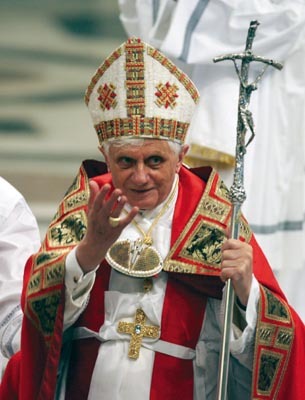Next Friday, 14 September, the worldwide restrictions on the celebration of the ancient Latin liturgy of the Catholic Church will be swept away. With a stroke of his pen, Pope Benedict XVI has ended a 40-year campaign to eradicate the Tridentine Mass, whose solemn rubrics are regarded with contempt by liberal bishops. In doing so, he has indicated that the entire worship of the Church — which has become tired and dreary since the Second Vatican Council — is on the brink of reformation. This is an exciting time to be a Catholic. Unless, that is, you are a diehard ‘go-ahead’ 1970s trendy, in which case you are probably hoping that the Good Lord will call Joseph Ratzinger to his reward as soon as possible.
First, let us get some terminology out of the way. Until 7 July this year, Catholics believed that there were two main Rites of Mass: the Tridentine or Old Rite, promulgated by Pope Pius V in 1570; and the New Rite, promulgated by Pope Paul VI in 1970. When I was growing up in the years after the Council, I was taught that the New Rite had completely superseded the Old. The only people who attended the Tridentine Mass were hatchet-faced old men wearing berets and gabardine raincoats, who muttered darkly about Satan’s capture of the papacy. I had never been to the Old Mass and knew only two things about it: that it was said by the priest ‘with his back to the people’ — how rude! — and that most priests who celebrated it were followers of the rebel French Archbishop Marcel Lefebvre. These people were unaccountably ‘attached’ to the Tridentine Rite and its ‘fussy’ accretions — the prayers at the foot of the altar; the intricately choreographed bows, crossings and genuflections of the celebrant; the ‘blessed mutter’ of the Canon in a voice inaudible to the congregation.








Comments
Join the debate for just £1 a month
Be part of the conversation with other Spectator readers by getting your first three months for £3.
UNLOCK ACCESS Just £1 a monthAlready a subscriber? Log in